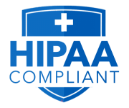Digitizing patient records isn’t just a modern convenience—it’s a necessity in today’s healthcare landscape. Converting paper-based charts into digital formats improves access, supports HIPAA compliance, reduces storage needs, and safeguards against data loss. This patient data digitization guide outlines the top 10 best practices for secure, efficient, and compliant scanning of medical documents.
Whether you’re a private clinic, hospital, or healthcare network, following these practices can streamline operations and protect patient confidentiality.
10 Best Practices for Scanning Patient Medical Records
Follow these medical record digitization best practices to ensure security, compliance, and usability.
1. Understand and Follow HIPAA Requirements
HIPAA sets strict rules on how patient health information (PHI) must be protected. Your scanning process must include:
- Access controls and secure login protocols
- Encryption during storage and transmission
- Proper authorization tracking and auditing
Implementing HIPAA-compliant document scanning builds trust, prevents legal issues, and protects sensitive patient data.
2. Use High-Quality, Medical-Grade Scanners
Choose scanners designed for healthcare document conversion. Look for features like:
- High resolution (300 DPI or more)
- Double-sided scanning (duplex)
- OCR (Optical Character Recognition) capabilities
This ensures clear, searchable digital records with minimal errors.
3. Organize Physical Files Before Scanning
Efficient scanning starts with preparation:
- Remove staples, clips, and sticky notes
- Sort documents by type or patient ID
- Flag duplicates or incomplete files
Proper prep reduces scanning time and improves accuracy.
4. Implement Indexing and Metadata for Easy Search
Assign searchable metadata to every record:
- Patient name
- Date of birth
- Document type (e.g., lab results, visit notes)
Good indexing transforms your scanned records into a usable, searchable digital archive—vital for both daily operations and audits.
5. Use Consistent File Formats and Compression Settings
Standardize your output using formats like:
- PDF for complete documents
- TIFF for high-quality images
- JPEG for faster access to smaller files
Also, apply compression to reduce storage size without sacrificing quality.
6. Establish a Strong Quality Control (QC) Process
Verify every batch of scans for:
- Completeness (no missing pages)
- Clarity (no blurring or shadowing)
- Correct indexing and naming
QC reduces costly errors and ensures your digital records are dependable.
7. Secure Your Digital Records Post-Scanning
Apply robust security protocols, including:
- Multi-factor authentication
- Role-based access restrictions
- Regular vulnerability scans and audits
These steps make your scanning process a secure medical document scanning system.
8. Maintain Redundant Backups
Never rely on just one copy of your digitized files. Use:
- Encrypted cloud backups
- Offsite storage
- Automated version control
This redundancy ensures patient data is never lost due to technical failures or cyberattacks.
9. Schedule Routine Compliance Audits
Audits help you stay aligned with evolving standards and avoid fines. Review:
- Access logs
- Staff permissions
- Encryption protocols
Routine checks are part of all effective document management solutions.
10. Train Staff on Scanning Protocols and Data Handling
Even the best systems fail without well-informed users. Train your staff on:
- HIPAA-compliant practices
- Scanning hardware and software
- Identifying errors or anomalies
Training reduces mistakes and increases accountability.
Why Choose Professional Medical Record Scanning Services?
While in-house scanning may seem feasible, professional services offer:
HIPAA Compliance Assurance
Access to High-End Equipment
Skilled Staff for Indexing and QC
Built-in Security and Backup Systems
Outsourcing to experienced providers like Smooth Solutions ensures compliance, accuracy, and cost-efficiency. We offer both Medical Record Scanning and Document Imaging Solutions.
Final Thoughts: Why This Process Matters
Digitizing patient files improves healthcare delivery, enhances data security, and simplifies compliance. By following these best practices and using trusted medical record scanning services, your healthcare facility can:
- Improve efficiency
- Reduce legal risks
- Enhance patient care
- Minimize paper storage needs
Ready to digitize your patient records the right way?
Visit our Medical Record Scanning Services page or explore our full Document Imaging Solutions to get started today.














